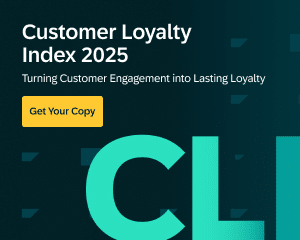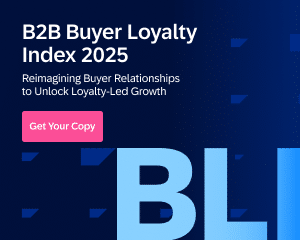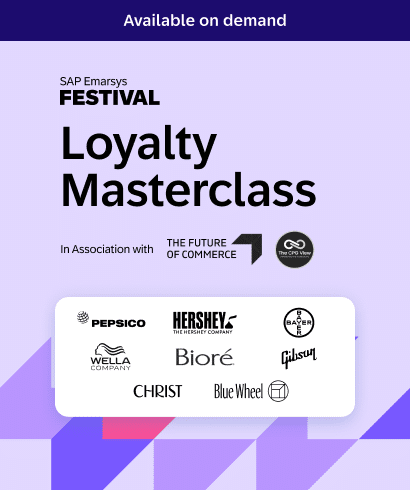Most brands are sitting on mountains of customer data. Clicks, opens, page views, purchase history, it’s all there. But knowing what to do with it? That’s where things get challenging.
Customer engagement analytics turns that data into something useful. It shows you how customers are interacting with your brand, where they’re dropping off, what’s driving loyalty, and, most importantly, what’s driving revenue.
This article breaks down how to use engagement analytics not just to report on what’s happened, but to improve what happens next.
More retention. More loyalty. More growth. Let’s jump in.
1. Understand The Full Customer Lifecycle, Not Just Campaigns
Most marketers measure campaign success in isolation. Open rates, click-through rates, conversions. Useful, but only part of the picture. Customer engagement analytics offer something far more valuable: a clear view of how customers are moving through the entire lifecycle.
Are new customers sticking beyond their first purchase? Are loyal customers starting to drift? Are subscribers actively engaging or simply sitting dormant?
When you track how customers progress from lead to first-time buyer, from first-time to repeat, and from repeat to loyal, the gaps become obvious. Maybe a large chunk of your customers never make it past that second purchase. Or perhaps once-loyal customers are quietly slipping away without anyone noticing.
That’s the signal to act. If first-to-second purchase is the sticking point, prioritise a post-purchase journey – one that might include product recommendations, a limited-time offer, or a loyalty incentive designed to nudge them back.
Key signals to track:
- The percentage of customers stuck at the first purchase.
- High drop-off between active and loyal segments.
- Engagement slowdowns at specific lifecycle stages.
When you move from campaign-based reporting to lifecycle-based analytics, you stop guessing where the problem is. It shows you exactly where to focus to improve retention, loyalty, and long-term growth.
Example in action: PUMA Europe used lifecycle-based automation to drive customers from one stage to the next. By activating 11 automated journeys, including Back in Stock, Abandoned Browse, and replenishment reminders, they achieved a 5x increase in email revenue and 50% database growth in six months. A clear example of moving beyond campaign metrics to focus on lifecycle progression.
2. Track And Grow Customer Lifetime Value (CLTV)
Many marketers treat CLTV like a static reporting number. Something you check in a dashboard, maybe add to a quarterly report, and move on. This is a mistake.
CLTV shouldn’t be looked at in isolation as a measure of what’s happened. It should be referenced as a dynamic signal that tells you how well your engagement strategy is working and, more importantly, to identify areas you can actively influence to drive revenue improvements.
Here’s what to track:
- Current CLTV by segment. Which groups are driving the most value? First-time buyers, loyalty members, subscribers, or long-term customers?
- Changes in CLTV over time. Are certain groups trending up or down? What campaigns, offers, or behaviors correlate with that shift?
- CLTV by channel or campaign source. Are email-acquired customers worth more long-term than paid social? Are loyalty program members outperforming others?
How to use it:
- If CLTV from a certain channel is consistently higher, prioritize that channel for acquisition.
- If CLTV is lagging among first-time buyers, focus on post-purchase automations that drive second and third orders. This could include personalized recommendations, limited-time bundles, or loyalty invitations.
- Use CLTV to shape retention strategies. Customers worth more should receive higher-value experiences like exclusive offers, early access, or personalized journeys.
Example in action: City Beach discovered that loyalty program members had significantly higher CLTV. By introducing Mobile Wallet-powered loyalty cards, they improved retention and saw a 40% increase in loyalty enrolment, directly impacting long-term value.
3. Move Beyond Vanity Metrics & Focus On Revenue Impact
Open rates, likes and view counts might tell you who’s paying attention, but they don’t tell you who’s buying.
Vanity metrics have their place. For example they can signal whether something’s resonating with your audience, which you can use to dial in your campaigns. But customer engagement analytics should go further. They should show you how engagement turns into actual business outcomes, like conversions, repeat purchases, retention, and long-term customer value.
Here’s what to track instead:
- Revenue per campaign or journey. Not just opens or clicks, but how much revenue each campaign generates.
- Repeat purchase rate by campaign. Are your loyalty campaigns, win-backs, or replenishment journeys actually driving second or third purchases?
- Attribution across channels. How do email, SMS, push, and paid social each contribute to purchases, and which drive the highest-value customers over time?
How to use it:
- Shift reporting conversations away from “this campaign got a 25% open rate” to “this journey generated £58,000 in revenue and drove a 15% repeat purchase rate.”
- Double down on campaigns that don’t just engage but convert, and cut or rework the ones that look good on the surface but don’t deliver value.
- Use attribution insights to optimise your channel mix. If SMS drives better revenue per message than email in a certain segment, shift budget or volume there.
Example in action: By consolidating customer data and activating personalised campaigns, Ferrara grew their contactable customer base by 59% and improved repeat purchase rates, showing the impact of focusing on business outcomes rather than engagement alone.
4. Identify Churn Risk Early
Most brands only realise a customer has churned once it’s already happened. By then, it’s much harder, and not to mention more expensive, to win them back. Customer engagement analytics flips that script by helping you spot the warning signs early.
The good news is that customers rarely disengage overnight. There are patterns that predict churn, and when you track these signals, you can intervene before customers disappear for good.
Key indicators to watch:
- Declining engagement. Customers opening fewer emails, clicking less, or ignoring push notifications.
- Increased time since last purchase. Especially when it exceeds their typical buying cycle.
- Drop in website or app visits. Less browsing often signals a loss of interest before purchase behaviour changes.
How to use it:
- Build segments based on churn risk: customers whose engagement has dropped below normal or whose purchase gap has exceeded average.
- Trigger automated win-back journeys: Offer personalised incentives, remind them of loyalty points, or highlight products based on past behaviour.
- Use churn prediction models (like those built into SAP Emarsys) to proactively surface at-risk customers without relying on manual guesswork.
Example in action: BrandAlley utilized SAP Emarsys to predict customer churn and launched personalized win-back campaigns, successfully re-engaging 24% of at-risk customers.
5. Optimise Campaigns In Real Time
Most marketers still run campaigns the old way: launch it, let it run, check the results when it’s over. But by then, it’s too late to fix what isn’t working. Real-time engagement analytics change that.
When you can see performance as it happens, you’re not guessing anymore. If a campaign isn’t driving clicks or a segment is underperforming, you can pivot mid-flight. Swap creative, adjust the offer, or shift volume to better-performing channels, all while the campaign is still running.
What to monitor in real time:
- Channel performance by segment. Is email driving engagement, or is SMS outperforming for this audience?
- Drop-offs within journeys. Are customers engaging with the first message but not the second? Are they clicking but not converting?
- Time-based engagement patterns. Are certain times or days spiking or dragging down performance?
How to use it:
- Pause or adjust campaigns that are underperforming before they waste more budget or damage engagement.
- Double down on channels that are delivering stronger results as data comes in, whether that’s moving from email to SMS, or from paid search to social.
- Test variables like subject lines, offers, creative, and timing dynamically instead of waiting until post-campaign analysis.
Example in action: Krispy Kreme ANZ used SAP Emarsys to connect in-store and online customer data, powering personalised email programs, product recommendations, and loyalty offers. This omnichannel approach led to a 70% increase in website clicks and a 19% uplift in revenue from digital channels year over year.
6. Power Smarter Segmentation With Behaviour Data
Most segmentation is still based on static data like demographics, location, or broad purchase history. This is a great start, and it’s definitely better than nothing, but historical data misses a vital point – it doesn’t reflect how your customers are engaging right now.
Before: You’re targeting targeting someone because they once bought trainers.
Now: You’re targeting them because they browsed running shoes twice this week, clicked a product email yesterday, and haven’t purchased yet.
Customer engagement analytics unlock dynamic, real-time segmentation that will completely transform your targeting, and the reception you receive from your audience.
What to segment by:
- Recent engagement. Opens, clicks, site visits, or app activity within the last X days.
- Lifecycle stage. New subscribers, first-time buyers, repeat customers, loyal members, or lapsing.
- Behavioural intent signals. Viewed a product but didn’t buy. Added to cart but abandoned. Visited a category multiple times.
How to use it:
- Build micro-segments based on real-time behaviours. For example, “Browsed shoes twice in 7 days but no purchase” triggers a personalised recommendation or offer.
- Tailor messaging to lifecycle stages. New customers get welcome content. At-risk customers get win-back offers. Loyal customers get early access or rewards.
- Let behaviour determine channel. Highly engaged users get email. Low-engagement segments get nudged via SMS or push.
Example in action: CUE Clothing Co. leveraged SAP Emarsys to personalize customer experiences across channels, resulting in a 5-6x increase in average order value and a 21% rise in loyal customers.
Ready To Turn Customer Engagement Into Revenue?
Mastering customer engagement analytics is just one piece of the puzzle. The real growth happens when you combine it with a proven retention and loyalty strategy, across every channel.








